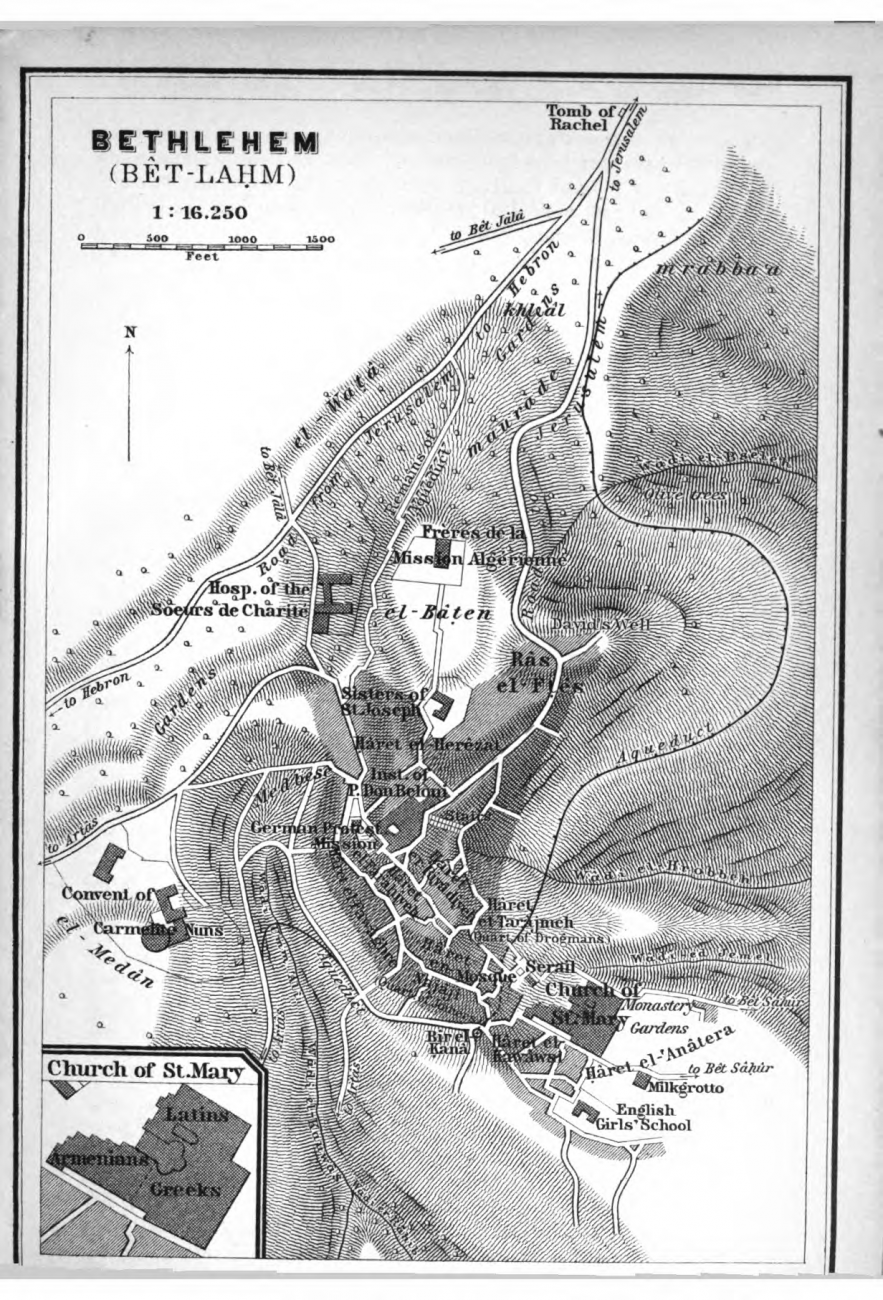London and Its Environs
10th rev, ed. Leipsic: Karl Baedeker, 1896. 424 pp. [Includes “Index of Streets.”] In 1896 Clemens could not find Tedworth Square listed in Baedeker's London (NB 39, TS p. 17).
10th rev, ed. Leipsic: Karl Baedeker, 1896. 424 pp. [Includes “Index of Streets.”] In 1896 Clemens could not find Tedworth Square listed in Baedeker's London (NB 39, TS p. 17).
Italy. Handbook for Travellers.
Part 1, Northern Italy, Ath rev. ed. (1877); [Download]
Part 2, Central Italy and Rome, 5th rev. ed. (1877);
Part 3, Southern Italy and Sicily, 6th rev. ed. (1876). 3 vols. Leipsic: Karl Baedeker, 1876-1877. [The first edition had been published in 1867.]
Bethany. — The Arabic name is El-Azarîyeh, from Lazarus, or Lazarium, the Arabs having taken the L for an article. Bethany was a favourite resort of Jesus, who had friends here (John xi). At a very early period churches and monasteries were erected here, and spots of traditionary interest pointed out to pilgrims. The Roman lady Paula visited a church on the site of Lazarus' grave. In 1138 Milicent, wife of Fulke, fourth king of Jerusalem (p. 86), founded a nunnery by the church of St. Lazarus, and in 1159 the building came into the possession of the Hospitallers.
 Bethlehem. — History. In the name of this town (Arab. Bêt Lahm), which has existed for thousands of years, is perpetuated a very ancient popular tradition. In Hebrew the word means the 'place of bread', or, more generally, the 'place of food', and is probably derived from the fact that the region about Bethlehem has from very remote antiquity presented a marked contrast to the surrounding 'wilderness'. ....
Bethlehem. — History. In the name of this town (Arab. Bêt Lahm), which has existed for thousands of years, is perpetuated a very ancient popular tradition. In Hebrew the word means the 'place of bread', or, more generally, the 'place of food', and is probably derived from the fact that the region about Bethlehem has from very remote antiquity presented a marked contrast to the surrounding 'wilderness'. ....
From Mâr Sâbâ to Bethlehem, 2 hrs. 50 min. A tolerable path ascends to the N. from the upper tower of the monastery, affording several fine retrospects of the Dead Sea and the wild mountain-scenery. After 25 min. the monastery-tower disappears. In spring all these heights are covered with good pastures. Far below, in the Wâdi en-Nâr, are seen the huts of the natives who live under the protection of the monastery. After 10 min. the Mt. of Olives comes in sight on the right. (A path with finer views diverges here to the N.
(1898) Route 15 page 160
The road follows the bank of the sea. After 18 min, we leave the 'Ain el-Jehayyir to the left; it contains pretty little fish (Cyprinodon Sophiae), but its brackish water should not be drunk except in case of necessity. We then leave the sea and ascend the Wâdi ed- Dabr, deeply eroded by its brook, and partly overgrown with under wood, where game is said to abound (partridges, wild pigeons, hares, etc.). After 35 min. we enjoy a line view of the Jordan valley and the Dead Sea. The route then leads to the left, skirting a deep ravine, and affording several other points of view.
The plain of Jericho presents several points of interest; but those who intend making the journey from Jericho to the ford of Jordan, the Dead Sea, and Mâr Sâbâ in a single day will have little time for digressions.